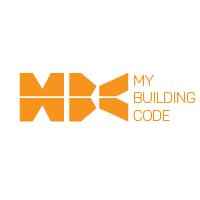Land is the only asset that appreciates in value over time. This attractive feature has made it one of the most sought after assets in Kenya. However, getting your desired plot is not a walk in the park — you have to go through some legal processes to ensure the land you acquire is legitimate and fit for the purpose you intend to use it for.
For this article we shall concentrate on what you should look out for when shopping for land with the intention to build on it. The legal process will be tackled in part 2 of this post.
Location
In the world of real estate, location is king and should always be the first thing to think about before buying. Specifically, how the plot of land relates to the overall community is very important. For instance, a lot that’s situated in a quiet and serene environment with alot of green space would be worth more than land in the same neighborhood that’s adjacent to a busy roadway.
Depending on your exact needs, you’ll want to assess the location of the lot and its proximity to amenities like public transit, highways, schools, parks, and so forth. Security of the area is also important.
Zoning requirements
Zoning is a system of land use regulation which designates permitted and “extent of uses” of land in certain areas within certain municipalities. Some of the restrictions could include building height, plot coverage and ratio etc For example, in areas near airports, buildings are restricted to a certain height, to avoid interfering with flight traffic or causing accidents, since at such areas planes fly at a low attitude.
There are three major zoning classifications which include commercial, residential and industrial.
Zoning affects land value and usage, hence before purchasing a piece of land it is important to understand the prevailing zoning classification and whether it fits your intended use of the land.
Topography
The type of soil, the number of trees and the elevation or flatness of the terrain are all elements of topography. This will affect where you can build a home and how much it’ll cost.
The ideal piece of land is one that has nice water drainage which may be because the soil doesn’t pool up water, property is slightly sloped, or is highly elevated so it doesn’t collect much water. Relatively flat areas are typically easier to build on. Whereas you may incur more costs building on steep land, it has an added advantage of providing good views of the landscape.
Riparian and Road Reserves
Ensure that the piece of land you are considering to buy does not fall within a riverine reserve, flood plain or road reserve. A qualified and registered land surveyor, engaged early in the land buying process should be able to establish whether there is any riparian land attached to the land and advice accordingly.
The land surveyor will re-establish the beacons, confirm the size of land, and peek through the land’s survey history to identify any easements, building setbacks, or other restrictions on the property, which will affect your use and future development of the site.
For those buying land from land-selling companies, which has become common practice, ensure that the seller involved qualified surveyors during demarcation and subdivision.
Fault lines (in the Rift Valley)
Some areas within the Great Rift Valley Region are considered geologically unstable and are prone to experiencing subtle volcanic faulting, hence one needs to be vigilant when attempting to purchase land here. Some spots have very weak surface that cannot even sustain a single storey building.
Part of towns such as Nakuru have cracks and fissures that pose danger to tall buildings. This is why the town’s planners have always insisted on construction of low-storey buildings –– less than four floors. According to geologists, the proximity of the Menengai crater to the town makes the region’s surface weak and therefore unable to sustain heavy weight.The geologist also says the fissures cutting underneath the town open up during heavy rainfall with potential to deepen over time.







